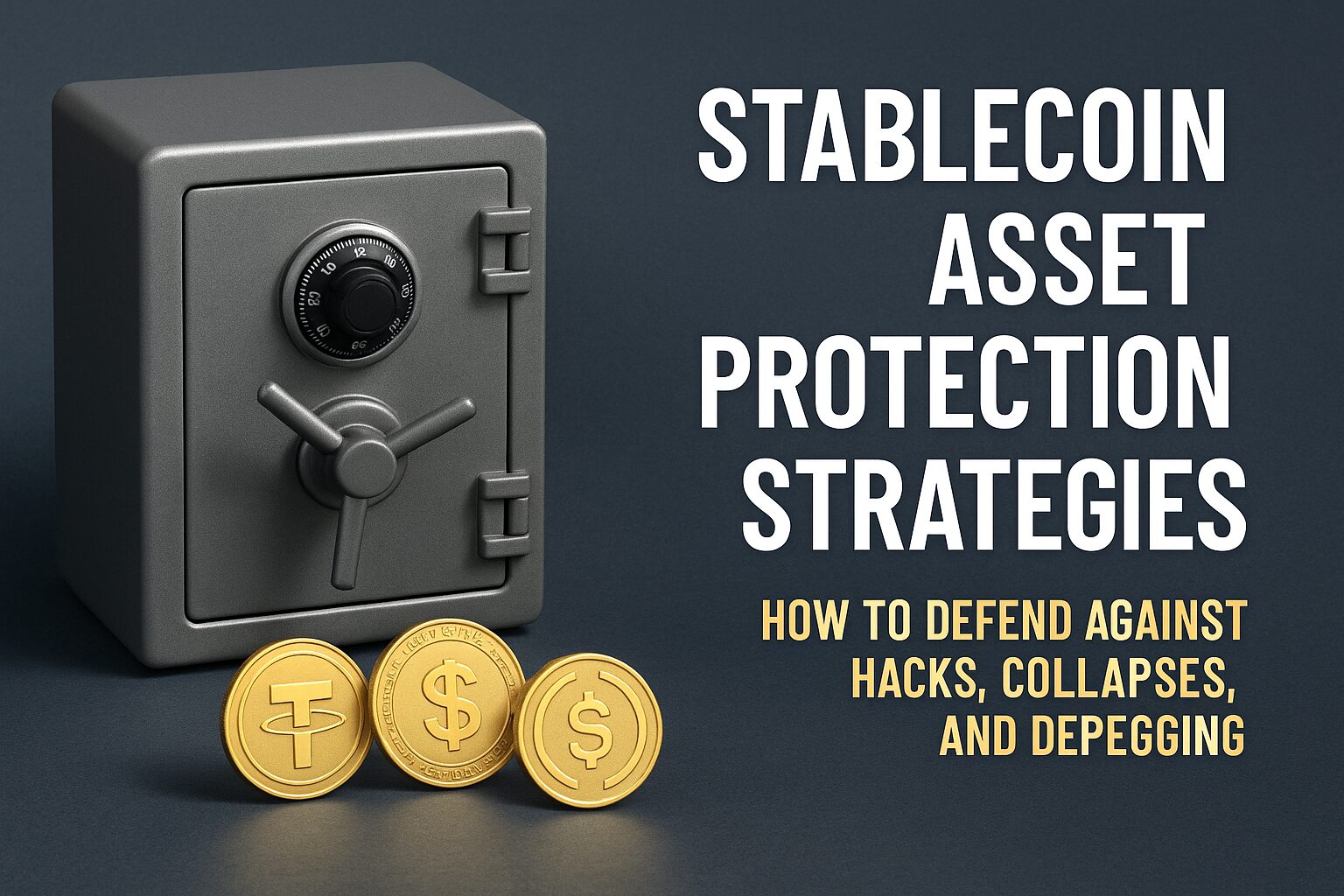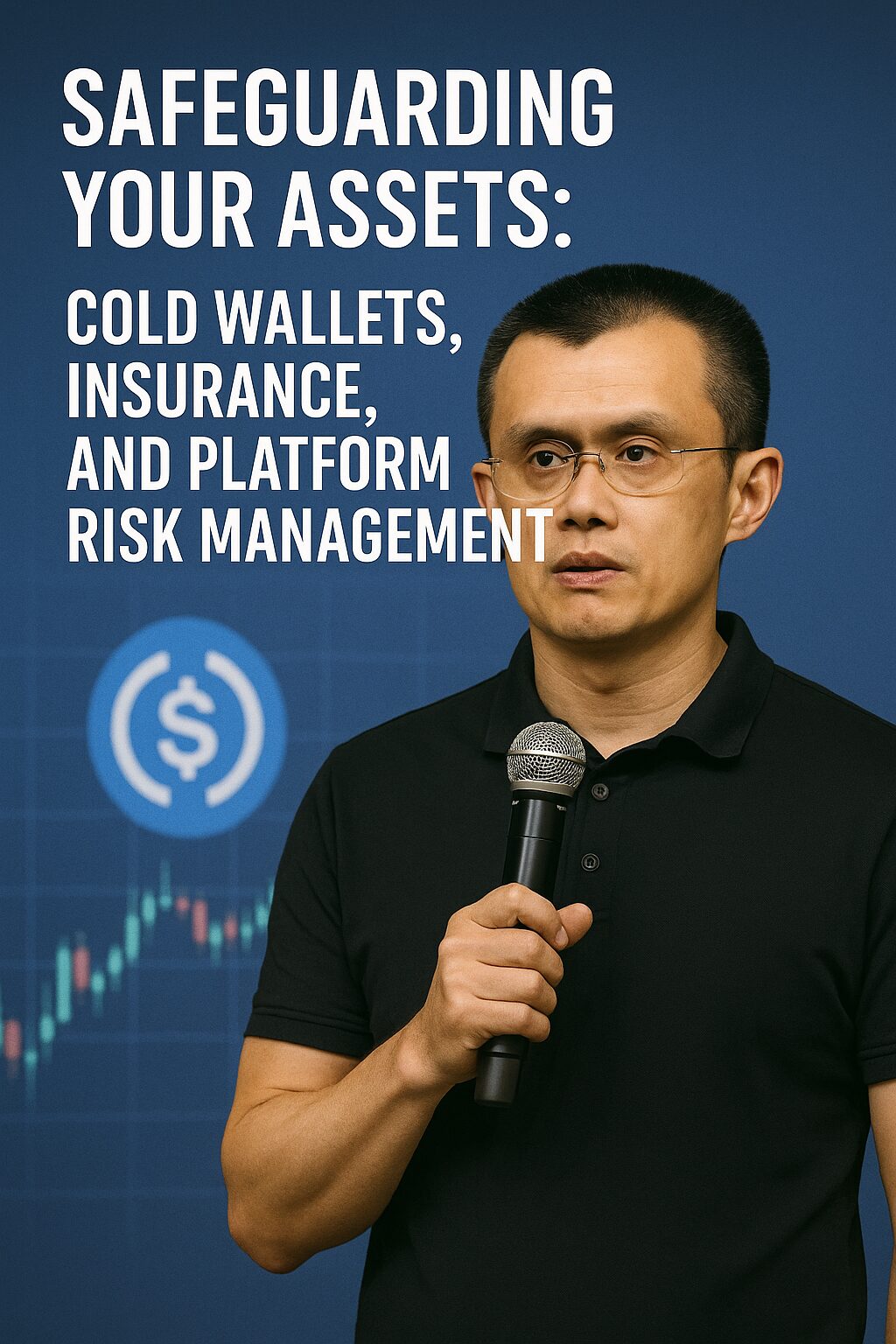Stablecoins are often seen as the “safe zone” of the crypto world. Pegged to fiat currencies like the U.S. dollar, they offer a familiar sense of stability in an otherwise volatile digital asset market. Investors use them to store profits, hedge volatility, or facilitate fast international transfers. But here’s the harsh truth: stablecoins are not immune to failure.
Behind the seemingly calm surface lie systemic risks that can jeopardize your holdings. From exchange bankruptcies to smart contract hacks and value depegging events, there are many ways your “safe” stablecoins can vanish or lose value. If you’re holding large amounts or building passive income streams with stablecoins, protecting your assets must be a top priority.
In this post, we’ll break down the seven most practical strategies to secure your stablecoin portfolio — from wallet setups and insurance protocols to the platforms you should (or shouldn’t) trust. Whether you’re a long-term investor or a global freelancer, these tips will help you stay one step ahead of disaster.
2. Understanding the Real Risks of Stablecoins
Despite the name, stablecoins are only as safe as the system behind them. Here are the three major risk categories every user should understand:
1. Hacks and Exploits
Stablecoins are often stored on centralized exchanges or in smart contracts that can be vulnerable to hacking. Even high-profile platforms like Binance and KuCoin have suffered multi-million-dollar losses. In many cases, users had no way to recover stolen funds.
2. Exchange or Platform Bankruptcy
When platforms like FTX or Celsius collapsed, user funds — including stablecoins — were frozen or lost entirely. Even if your stablecoins maintain their value on paper, they’re worthless if you can’t withdraw them.
3. Depegging Events
Stablecoins are meant to stay pegged at $1, but history shows that this peg can break. The TerraUSD (UST) collapse is the most infamous case, but even trusted names like USDC and USDT have temporarily dropped below $1 during liquidity crises or regulatory panic.
Bottom line: Holding stablecoins is not the same as holding cash. You’re still exposed to crypto-level risks — just in a different form.
3. Real Case Studies: Hacks, Collapses, Depegs
Let’s take a closer look at some of the most high-impact stablecoin-related events:
- TerraUSD (UST) Collapse
In 2022, UST — once a top-10 cryptocurrency — lost its dollar peg and spiraled to near-zero within days. Billions were wiped out, and retail investors suffered devastating losses. The failure wasn’t due to hacking, but to a flawed algorithmic design and cascading market panic. - FTX Bankruptcy
When FTX collapsed, users lost access to all assets, including stablecoins. Some are still tied up in bankruptcy proceedings. This event proved that even “trusted” exchanges can implode without warning. - USDC Depegging (March 2023)
USDC briefly fell to $0.87 after Silicon Valley Bank’s failure, since Circle had deposits there. While it later recovered, the scare highlighted how even regulated stablecoins can wobble due to banking system exposure. - Curve Finance Hack (2023)
A vulnerability in Curve’s smart contracts allowed attackers to drain liquidity pools holding stablecoins. DeFi users holding tokens in those pools were hit with immediate losses.
These examples demonstrate that the risks are not theoretical. They’ve happened — and they’ll happen again.
4. Seven Key Strategies for Asset Protection
Here are seven battle-tested ways to reduce your exposure and secure your stablecoin holdings:
- Use Hardware Wallets
Keep long-term stablecoin holdings in cold wallets like Ledger or Trezor. Avoid storing large amounts on exchanges or hot wallets. - Diversify Across Platforms
Don’t keep everything in one place. Spread your stablecoins across multiple platforms, ideally including both CeFi and DeFi. - Choose Reputable Stablecoins
Stick to stablecoins with high transparency and regular audits (e.g., USDC, DAI). Avoid algorithmic or low-liquidity options. - Leverage Insurance Protocols
Platforms like Nexus Mutual or InsurAce offer smart contract insurance that can protect your funds from exploits. - Monitor Depeg Indicators
Use tools like CoinMarketCap’s stablecoin trackers or depeg alerts (e.g., DeFiLlama) to get notified of sudden price drops. - Avoid High-Yield Traps
If a platform offers 30%+ APY, ask yourself why. Many of these returns are unsustainable and often signal higher risk. - Separate Storage and Yield Accounts
Keep a portion of your holdings purely in storage for safety, and another in yield-generating accounts. Don’t risk your entire balance for returns.
5. Why Survival Matters More Than Yield
In the hunt for returns, many stablecoin users forget the golden rule: never chase yield at the cost of security.
If your funds are locked, hacked, or lost, the yield becomes irrelevant. The crypto market moves fast, but long-term wealth comes from survival, not speculation. Smart investors understand that protecting the principal is the first step to compounding gains.
It’s better to earn 4% annually in a safe, boring setup than risk everything for a 20% yield that might vanish overnight.
6. Recommended Stablecoin Setup (Practical Guide)
Here’s a sample setup for maximizing security without sacrificing flexibility:
- Cold Storage (40%)
Held in hardware wallets for long-term security (e.g., Ledger with USDC or DAI). - CeFi Platforms (30%)
Trusted platforms like Coinbase, Kraken, or Gemini for easy liquidity and fiat conversion. - DeFi Yield (20%)
Low-risk yield on platforms like Aave or Compound, ideally with insurance coverage. - Hot Wallet (10%)
Metamask or similar wallet for day-to-day usage or short-term swaps.
This setup offers redundancy, flexibility, and protection against single points of failure. Adjust percentages based on your risk tolerance.
7. Conclusion
Stablecoins may feel like digital cash, but they require a completely different level of risk management. By understanding the hidden threats and implementing smart protection strategies, you can turn stablecoins into a reliable foundation for long-term growth — not a hidden liability.
Survival isn’t sexy, but in crypto, it’s profitable. Play smart, stay safe, and let your stablecoins serve you — not surprise you.

